Lohri: Honouring the Harvest
In the state of Punjab, winters arrive by the first week of December, reach their peak in January and end as Basant (spring) approaches. A popular saying goes:
Aayaa Basant, Paalaa Urant
The spring is here; the cold is nowhere.
Lohri is a festival where the people of Punjab, begin their year with a tribute to the farmers for their hard work and labour. The term Lohri seems to have originated from a combination of the two words loh (iron) and ari (saw). Alternatively, many believe that the term Lohri comes from Tilohri, i.e., til meaning sesame and rorhi meaning gur (Jaggery). During the festival, foods like gur ki gajjak, til ki rewari are offered to the fire as a way of paying gratitude to the Sun God.
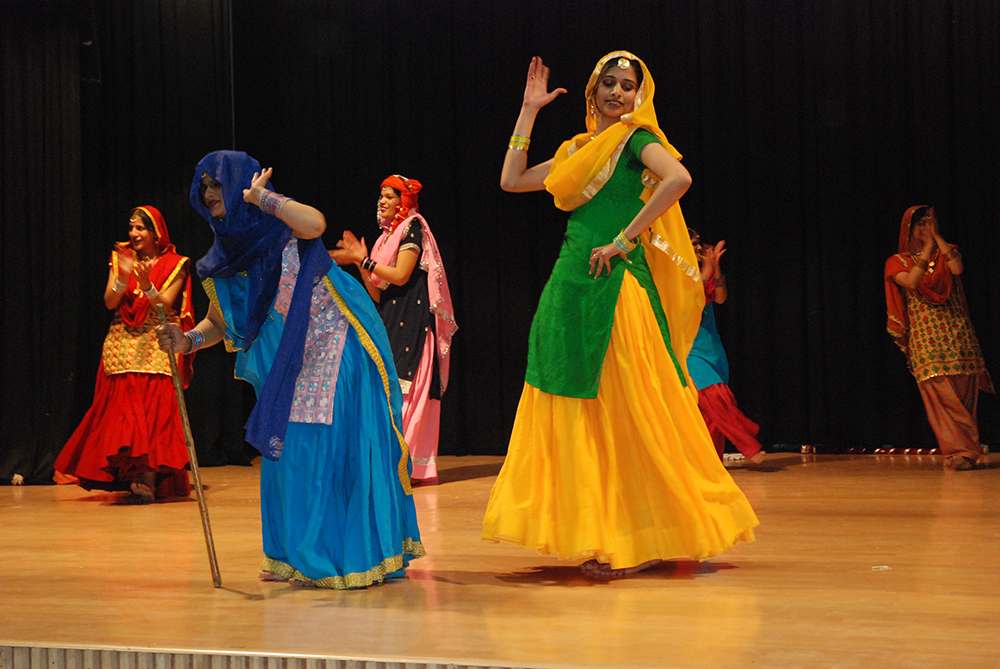
Women performing folk dance, Giddha
It is traditionally believed that the night when the festival of Lohri is celebrated, is the longest night of the year, also known as the winter solstice. The highlight of the festival is the lighting of the bonfire after sunset. This fire is considered particularly auspicious for newly-wed couples and parents with new-born babies. In order to seek the blessings of the Gods, couples and parents circumambulate the bonfire and pour offerings like Gajjak (a sweet winter snack), popcorn and puffed rice into the fire. According to the folklore of Punjab, on the day of Lohri the flames of this bonfire carry the prayers of the people to the Sun God who will bless the earth with a successful harvest and also end the cold and harsh winter days.
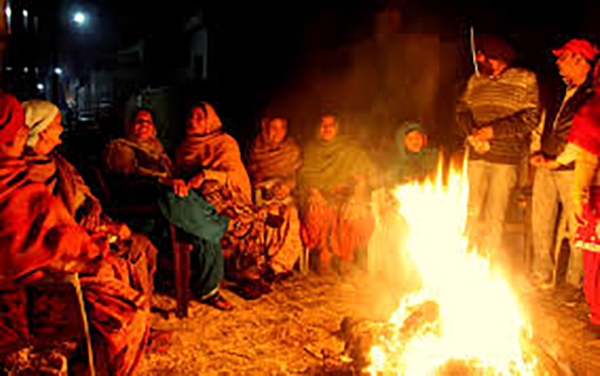
Gathering around Lohri Bonfire
The festival of Lohri is observed all over Punjab. As per legend, a popular narrative behind this festival is the mythical story of Dulla Bhatti, who was regarded as a hero in the region for rescuing abducted girls and arranging their marriages. As a part of Lohri celebrations, a few days before the night of Lohri, young boys and girls go from door to door singing songs, and collecting money, sweets and other eatables. Following is the legendary song, sung about two girls rescued by Dhulla Bhatti- Sundri and Mundri:
Sunder mundriye ho!
Tera kaun vicharaa ho!
Dullah Bhatti walla ho!
Dullhe di dhee vyayae ho!
Ser shakkar payee ho!
Kudi da laal pathaka ho!
Kudi da saal upaata ho!
Salu kaun samete!
Chacha gali dese!
Chache choori kutti! zamidara lutti!
Zamindaar sudhaye!
Bum Bum bhole aaye!
Ek bhola reh gaya!
Sipahee far ke lai gaya!
Sipahee ne mari itt!
Bhaanvey ro te bhaanvey pitt!
Sanoo de de Lohri, te teri jeeve jodi!

Men performing folk dance, Bhangra
The festival is also an occasion for preparing traditional dishes based on recipes that are being handed on from generation to generation as part of Lohri celebrations. Some of the famous dishes are Sarson ka Saag-Makki ki Roti, Pinniyan, Gur ki Gajjak and Til Laddoos, Panjeeri and Makhane ki kheer.
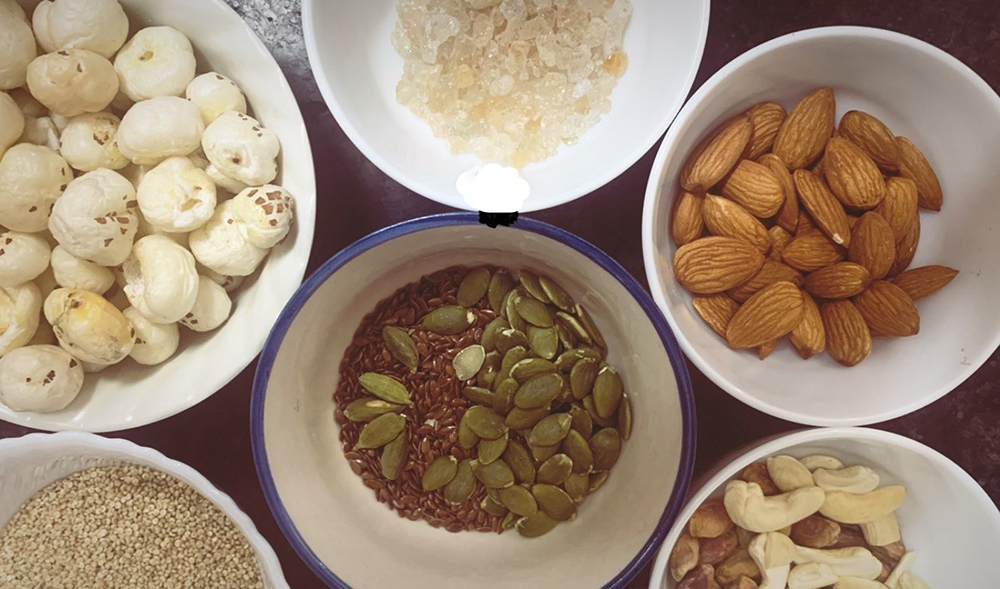
Ingredients used in Panjeeri
The consumption of certain traditional dishes during Lohri has distinct ritual as well as dietary significance. For example, it is a ritual that Sarson ka Saag is consumed a day after Lohri. This ritual is evidenced by a popular Punjabi saying “Poh Riddhi, Magh Khaddi” meaning, according to the Punjabi calendar, food (saag) is supposed to be prepared in the month of Poh, and eaten the day after, that is, in the month of Magh. Panjeeri is consumed in the winter month of Lohri as it contains nutritive ingredients like nuts, seeds, and spices like cardamom and cinnamon, that keep the body warm. Panjeeri is essentially an assortment of various nuts, seeds, multigrain flour, jaggery, gondh (edible gum) and ghee. These ingredients are rich sources of calcium, healthy fats like omega 3, vitamin E, iron and magnesium, that relieve body ache and relax muscles and joints. Panjeeri is considered to be a powerhouse of nutrition for women who have given birth recently.
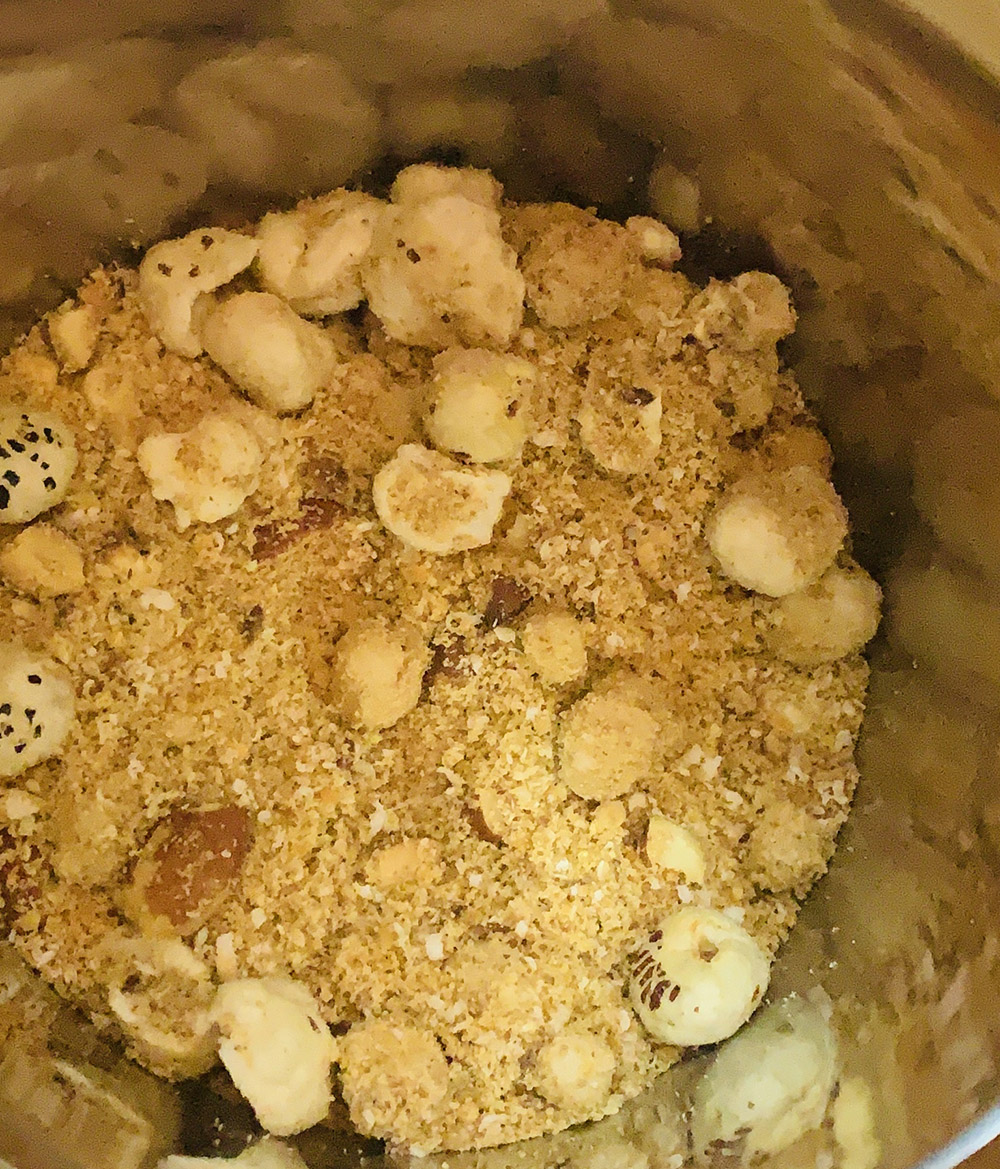
Panjeeri
Sarson ka Saag with Makki ki Roti
One of the most important ingredients used to prepare dishes in the festival of Lohri is jaggery. It is a healthy sugar alternative used in dishes like, Gajjak, Rewari, Kheer, Laddoos and Panjeeri. It provides energy for the hard labour which is required for working on the fields. Another benefit of consuming jaggery lies in its cleansing properties that help in flushing out toxins from the body. Indigenously called gudd, it is, in fact, a part of the traditional daily diet of the people of the region. Apart from Jaggery, sesame seeds are also used in preparing snack items like Til Gajjak and Til Laddoos. Sesame seeds are cooked in jaggery syrup and then set, in thin layers. Once they cool down, they are eaten as snacks. Sesame seeds are extremely healthy when taken in moderation, as they are a great source of protein. Their consumption also protects one from diseases like arthritis, fosters bone health, and maintains healthy blood sugar levels.
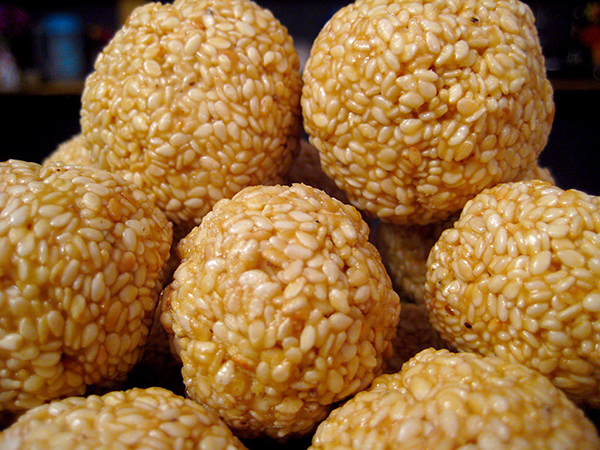
Til Laddoo made in Gudd
It is interesting to know that Lohri was also celebrated in the great Lahore Darbar held during the reign of Maharaja Ranjit Singh in Punjab. It is said that on this occasion, Maharaja Ranjit Singh’s trousseau was yellow. He is also said to have issued royal orders in the names of his close attendants to present themselves at the Darbar in similarly coloured attires. He also granted robes of honour to chieftains, vakils and other nobles on this day.
Lohri is more than a festival for the people of Punjab, it is a celebration of their industry and their culture, with exuberance. Lohri also coincides with the festival of Pongal and Makar Sankranti, all of which send a similar message, that is of thanking the Almighty for abundance on earth.
 Government of Indiaa
Government of Indiaa

 Recognizing the ongoing need to position itself for the digital future, Indian Culture is an initiative by the Ministry of Culture. A platform that hosts data of cultural relevance from various repositories and institutions all over India.
Recognizing the ongoing need to position itself for the digital future, Indian Culture is an initiative by the Ministry of Culture. A platform that hosts data of cultural relevance from various repositories and institutions all over India.
